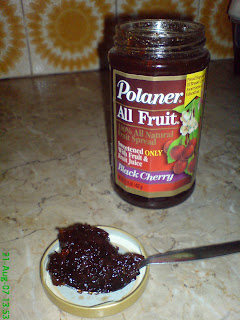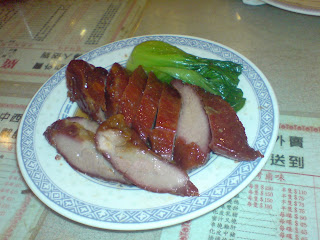
A kiddie birthday party would not be complete without the spaghetti with red meat sauce: strands of soggy white pasta doused with a glaring red ground beef and hotdog sauce that is in no way reminiscent of tomato. In the Philippines, spaghetti sauce is always sweet, slightly spicy and not a single bit sour. Not surprising since many put catsup to the sauce. It tastes more like the Neapolitan sauce the Japanese are accustomed to. Perhaps because of its sweetness, or the tons of cheese heaped on it, children just love spaghetti.
Here in our country, we just call it “spaghetti.” The spaghetti that the Americans introduced has evolved into a Pinoy dish of its own. Today, this Pinoy version is served from the lowliest of street stalls to fast-food chains to well-established restaurants.
Over the years, however, I have developed a taste for the authentic Italian spaghetti alla Bolognese – a red sauce rich in tomato flavor, accented by meat and herbs. The dominant flavor is of course is that of ripe tomatoes – slightly sour, but sweet on its own without the addition of sugar or catsup.
Hence, this recipe foreshadows the Italian version, but you can always modify it to your taste by, yes, adding catsup and sugar. It is a versatile sauce. You can pour it over spaghetti or penne, or use it for lasagna!
This recipe, by the way, can dress up to 1 kilogram (weight of uncooked) pasta. I make this big a batch and store the excess in the freezer in small containers. It is very handy if you need a quick fix – just boil some pasta and heat up the sauce! Then grate some fresh parmesan over it.
Sugo di Carne (tomato and meat sauce)
On a large sauce pan set over medium-high heat, add in 200 grams chopped bacon (but preferably pancetta). Let the bits sweat and release all its oil. When the bits have started to brown, add in enough olive oil to cover the pan, around three tablespoons. Sauté the chopped vegetables: one large onion, four to five cloves garlic, one medium carrot and two stalks celery. Cook until wilted.
Dump in the meats. I usually use a mixture of ground beef and Italian pork sausage. If you cannot find FRESH/ raw Italian pork sausage (or any sausage you like), then use ground pork. (Make sure to take the sausage out of its casing. You want to mash it into the sauce together with the beef.) Break the meats into the pan and sauté until “browned.” At this point, you can add in some fresh mushrooms. I usually use a cup of mushroom stems, rather than throwing them away. But this is really optional and will not affect the flavor much.
Next, add in two cups of red wine. Make sure the wine you add in is good enough for you to drink. Taste it before adding. You may even add white wine if you like a milder flavor. But red wine in this recipe goes well with the beef. Add a little more wine if the two cups was not enough to cover the mixture. Now, increase the heat to high and boil away half of this liquid. Stir occasionally to prevent it from sticking to the bottom.
When the wine has reduced to half, pour in around two cups of canned crushed tomatoes (one large can – I only use the Italian brands), two cups of tomato sauce, one cup of milk and around two cups of water or stock.
At this point, you may now add in your seasonings. I prefer fresh herbs: one tablespoon of fresh chopped oregano leaves, and one bunch of fresh chopped basil leaves, plus a pinch of nutmeg. If you have only dried, add one and two teaspoons, respectively. You may need to add more towards the end if you feel it needs to be more herb-y. Feel free to add some sage or thyme, but oregano and basil is okay for me. Season with some pepper and half a teaspoon of salt. I only worry about the salt towards the end. You can always add more, but adding too much now may only ruin an afternoon of hard work!
The sauce at this point will be very soupy or watery. Cover pan and reduce the heat. Simmer for around one and a half hours, or until meat is tender. The sauce will also reduce and thicken. I usually leave the pan only slightly covered to allow evaporation. By the way, you need to stir this once in a while to prevent it from sticking, maybe around every 30 minutes but other than that, you can pretty much leave it alone.
At the end of the cooking time, stir the sauce and check for the right consistency. If it is still soupy, then increase the heat and boil away the excess liquid. If it lacks some more tomato flavor, then troubleshoot with some tomato paste. Add only a little (a teaspoon or so) at a time. I only add salt at the very last minute. Season accordingly.
You may add some more fresh chopped basil to liven up the taste. Just before serving, dump in the pasta and toss with the sauce. Serve on a plate topped with freshly grated parmesan cheese.
If you are heating this sauce from the freezer, it is best to add a leaf or two of chopped basil to the sauce while heating. This will “wake up” the flavor, so to speak. Enjoy!
 (huge amounts of liquid are boiled away towards the end of the cooking process, giving a rich thick tomato meat sauce.)
(huge amounts of liquid are boiled away towards the end of the cooking process, giving a rich thick tomato meat sauce.) (more about the other party grub on the coming days - buffalo wings and veggie pizza)
(more about the other party grub on the coming days - buffalo wings and veggie pizza)

 (Several flights have arrived!)
(Several flights have arrived!)

















































